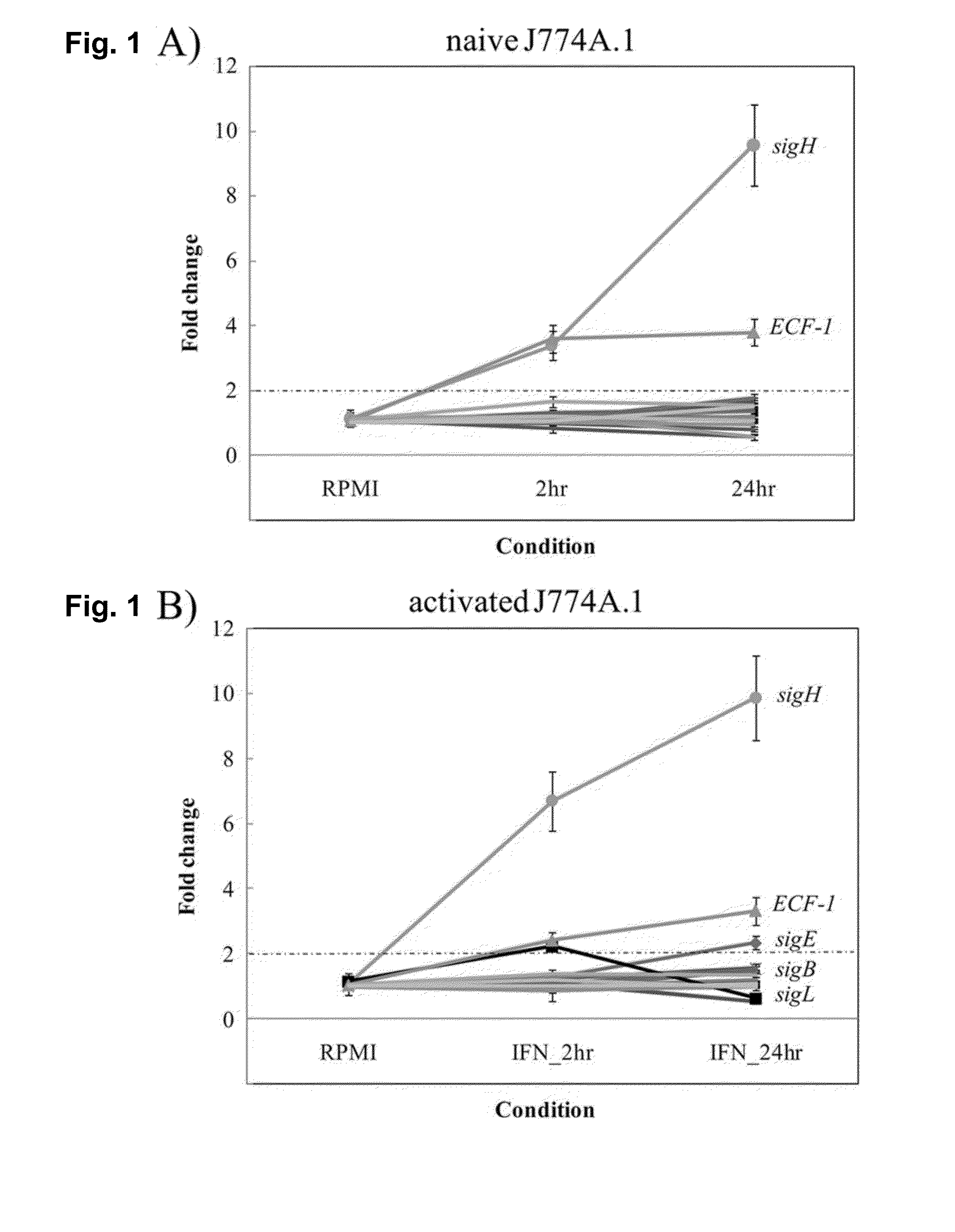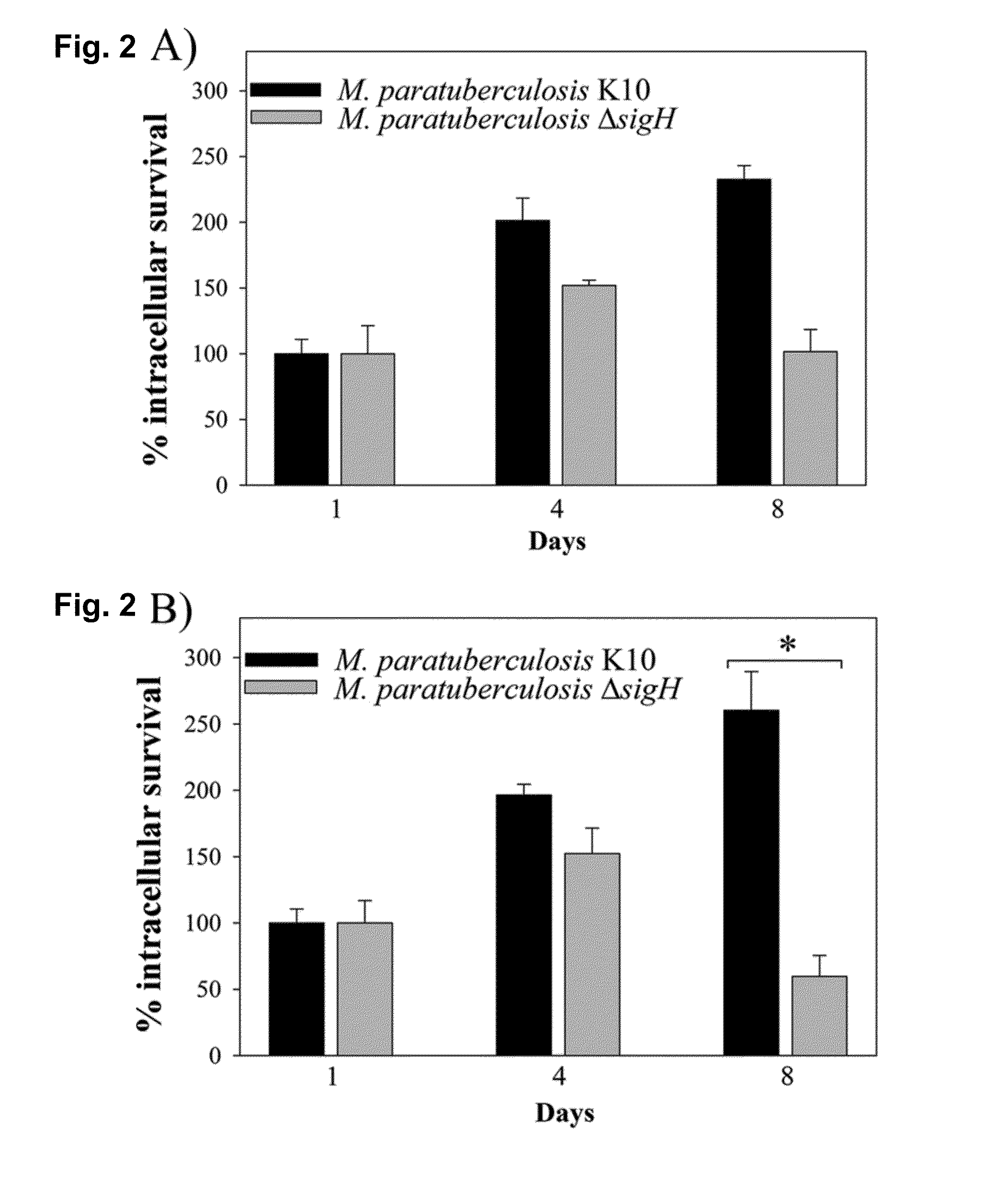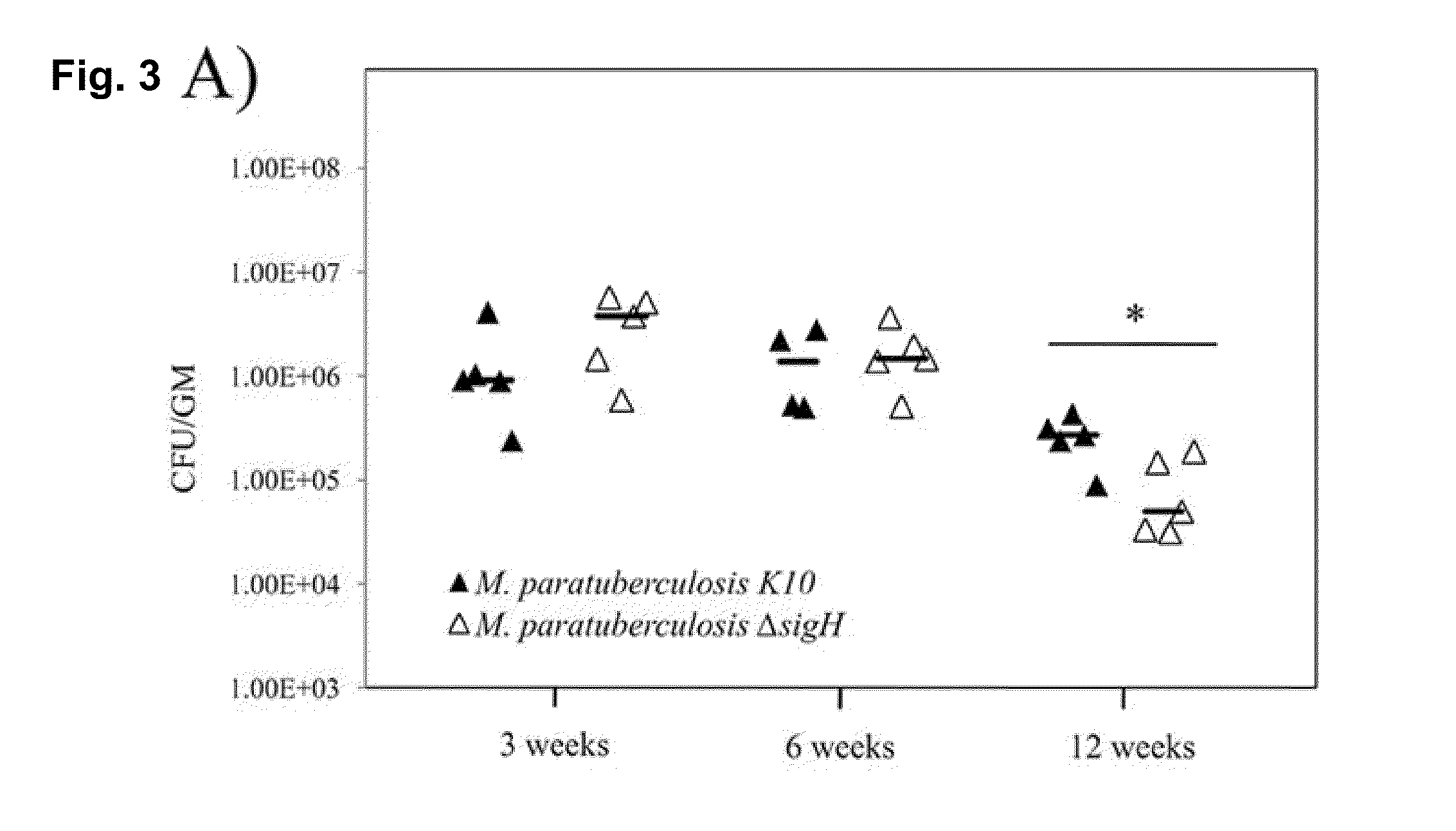Global Gene Regulators (GGR) As Vaccine Candidates Against Paratuberculosis
a global gene regulator and vaccine candidate technology, applied in the field of global gene regulators, can solve the problems of limited use, no comprehensive study has been conducted to clarify the relationship between m. paratuberculosis /i>gene expression and specific host microenvironments, and severe economic losses
- Summary
- Abstract
- Description
- Claims
- Application Information
AI Technical Summary
Benefits of technology
Problems solved by technology
Method used
Image
Examples
example 1
[0089]The disclosure of Example 1 has been published in Infection and Immunity, June 2013, 81(6): 2242-2257, entitled “Key Role for the Alternative Sigma Factor, SigH, in the Intracellular Life of Mycobacterium avium subsp. paratuberculosis during Macrophage Stress,” which is incorporated herein by reference in its entirety.
[0090]Bacteria.
[0091]Escherichia coli DH5α and HB101 were used as host cells for cloning purposes in all experiments presented here. M. avium subsp. paratuberculosis K10 and Mycobacterium smegmatis mc2155 strains were grown in Middlebrook 7H9 broth and on Middlebrook 7H10 plates as previously described (1).
[0092]Construction of the ΔsigH Mutant.
[0093]A specialized transduction protocol was adopted with a few modifications to delete the sigH / MAP3324c gene using the M. avium subsp. paratuberculosis strain (12). Briefly, two ˜900-bp PCR fragments flanking each end of the sigH coding region were amplified and cloned into the pYUB854 shuttle vector. The resulting pYUB...
example 2
[0152]References cited in this Example are listed in the section of References as “References cited in Example 2.”
[0153]Materials and Methods
[0154]Bacterial Strains.
[0155]M. avium subsp. paratuberculosis K10 and M. smegmatis mc2155 strains were grown in Middlebrook 7H9 broth and on Middlebrook 7H10 plates as previously described (2, 19). For cloning, Escherichia coli DH5α and HB101 were used as host cells. To generate an M. avium subsp. paratuberculosis mutant, a specialized transduction protocol was adopted to delete the sigL / MAP4201 gene using the M. avium subsp. paratuberculosis K10 strain (19, 25). Primers were designed to amplify ˜750 bp PCR fragments flanking each end of the sigL coding region and cloned into pYUB854 (19). The resulting vector was used to generate sigL deleted mutant, M. avium subsp. paratuberculosis ΔsigL, according to the methods described elsewhere (26). Genotype of the M. avium subsp. paratuberculosis ΔsigL was confirmed by PCR and sequence analysis (19). ...
example 3
[0188]References cited in this Example are listed in the section of References as “References cited in Example 3.”
[0189]Survival of GGR Mutants in the Murine Model of Paratuberculosis.
[0190]To assess the role of sigH and sigL in M. ap virulence, we investigated the persistence of the each mutant in mice. The initial growth kinetic of the wild-type and ΔsigH mutant strains was similar, with an equal burden of bacteria in liver, intestine and spleen up to 6 WPI (FIG. 8). However, at 12 WPI, colonization levels were significantly reduced for ΔsigH compared to its parental strain only in spleen and intestine (pM. ap in mice. For the ΔsigL mutant, bacterial colonization levels were significantly reduced in spleen, liver and intestine at all times post infection (FIG. 8) compared to K10, suggesting a pivotal role for sigL in the pathogenesis of M. ap.
[0191]Interestingly, when the ΔsigH mutant of M. tuberculosis was used to challenge mice, no differences in bacterial load were observed in...
PUM
| Property | Measurement | Unit |
|---|---|---|
| Heat | aaaaa | aaaaa |
Abstract
Description
Claims
Application Information
 Login to View More
Login to View More - R&D
- Intellectual Property
- Life Sciences
- Materials
- Tech Scout
- Unparalleled Data Quality
- Higher Quality Content
- 60% Fewer Hallucinations
Browse by: Latest US Patents, China's latest patents, Technical Efficacy Thesaurus, Application Domain, Technology Topic, Popular Technical Reports.
© 2025 PatSnap. All rights reserved.Legal|Privacy policy|Modern Slavery Act Transparency Statement|Sitemap|About US| Contact US: help@patsnap.com



